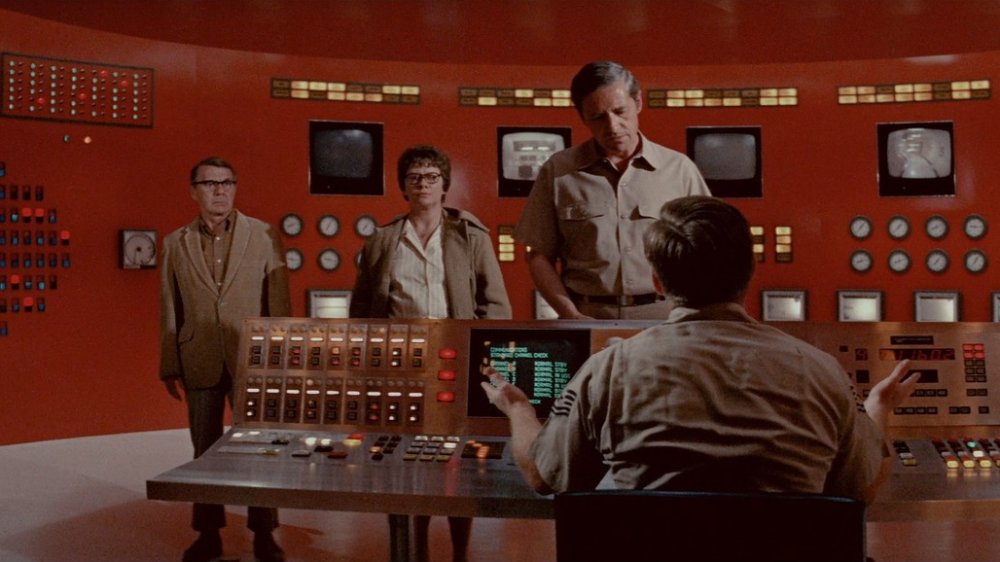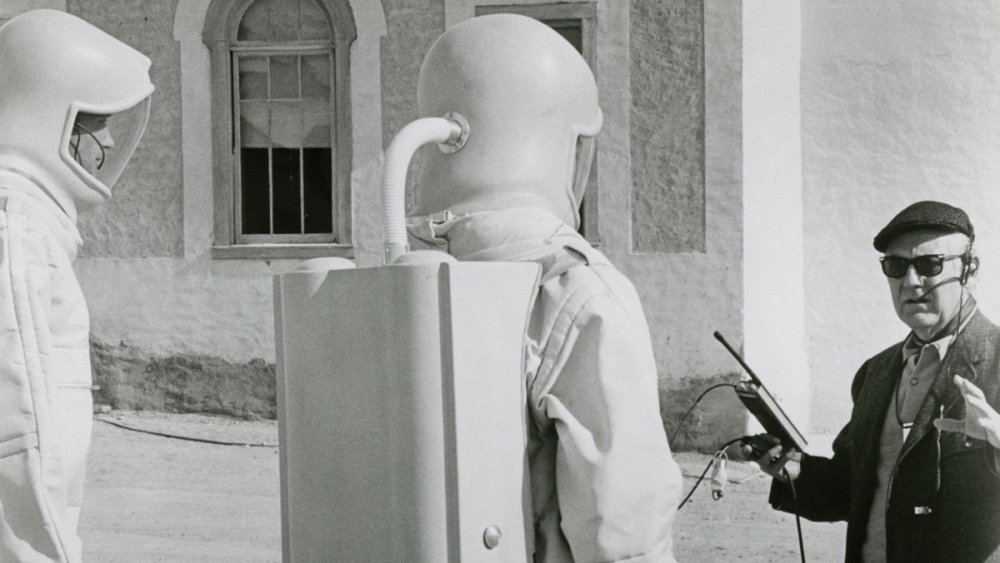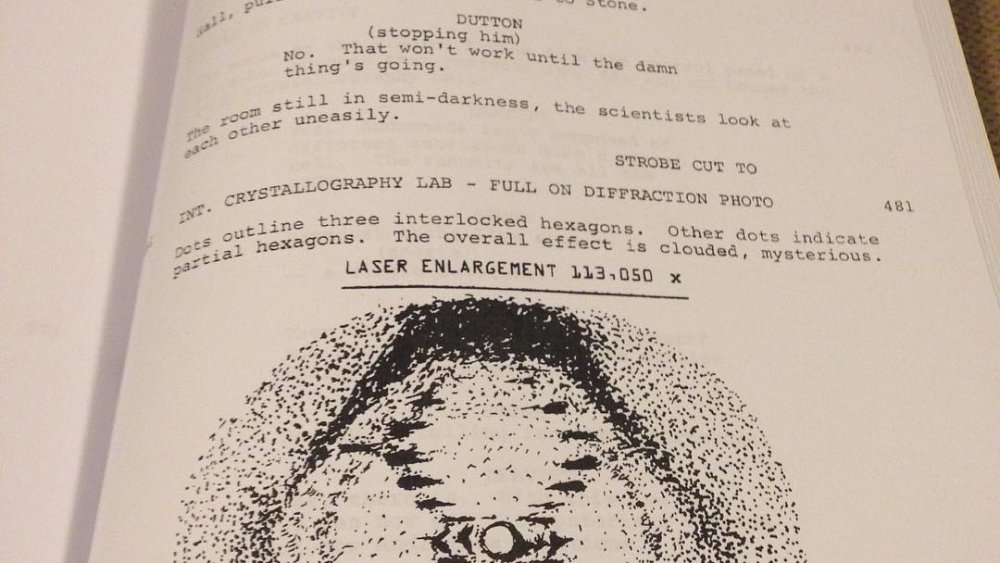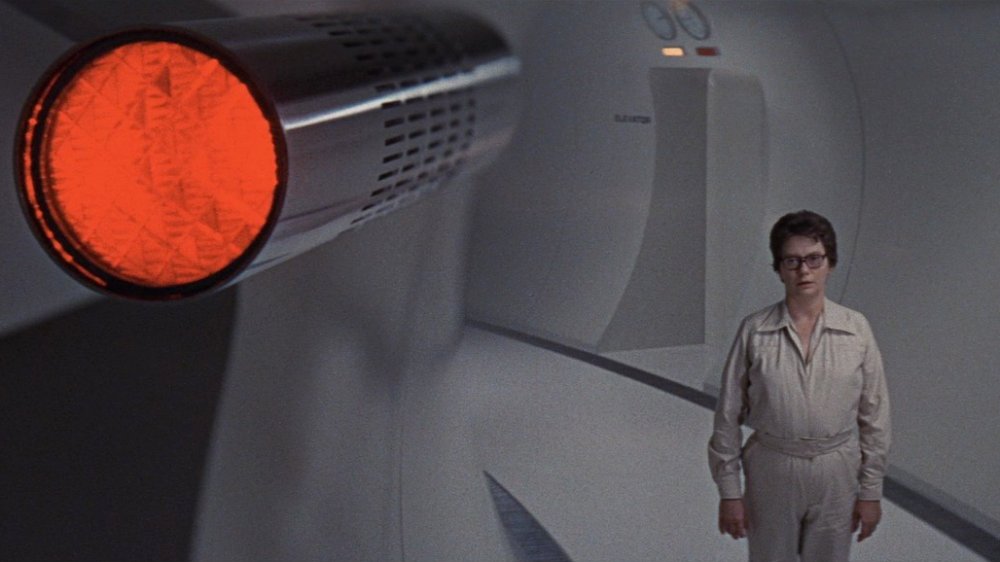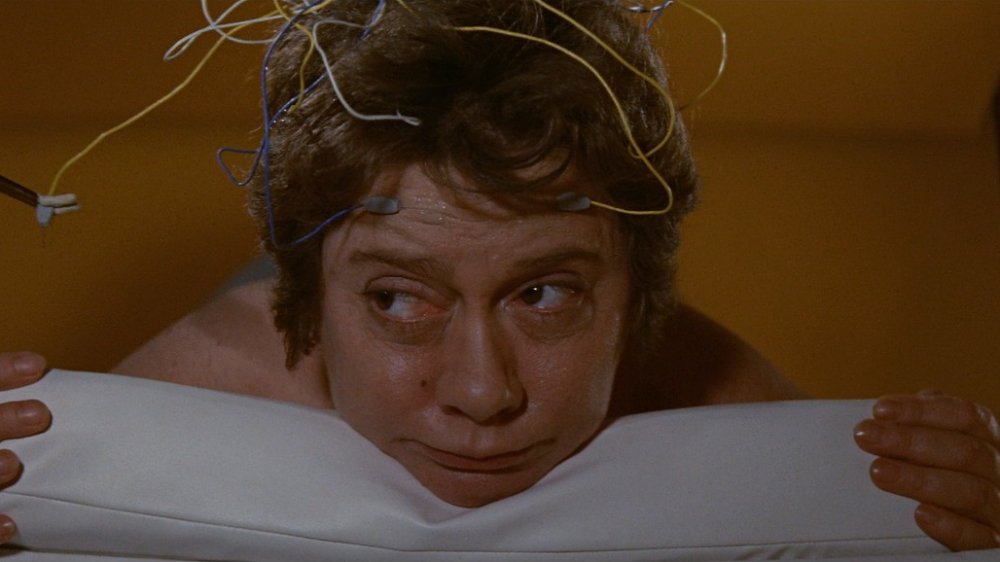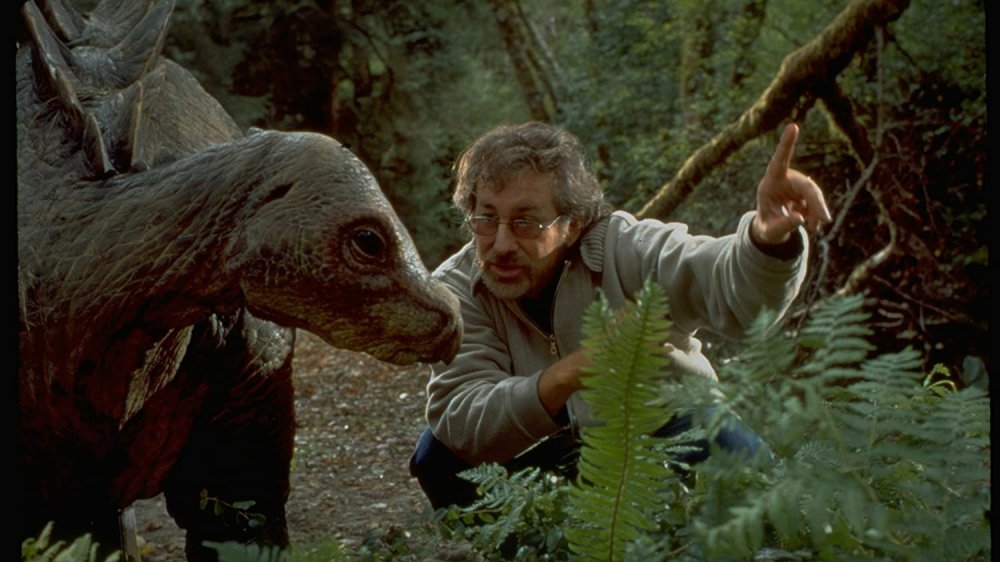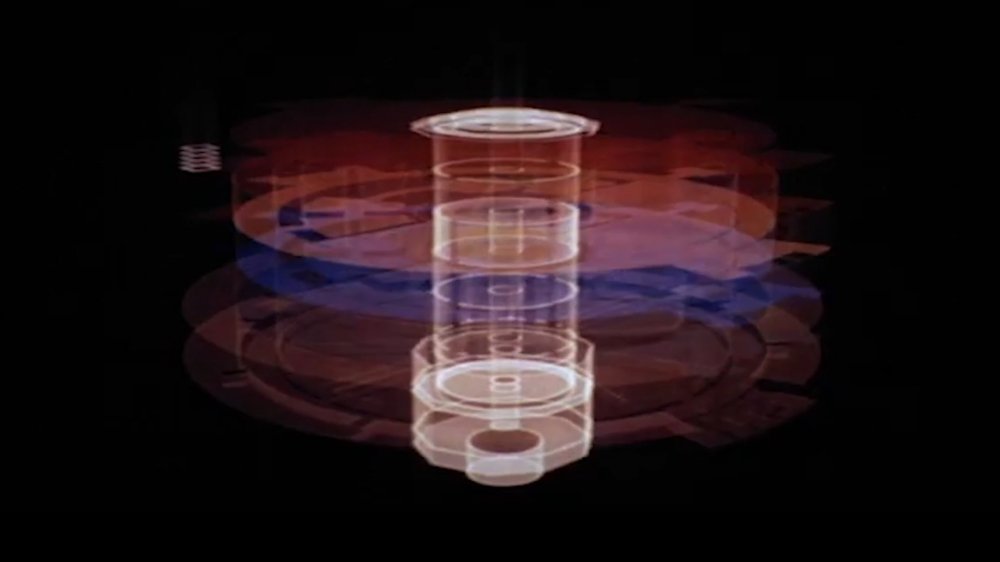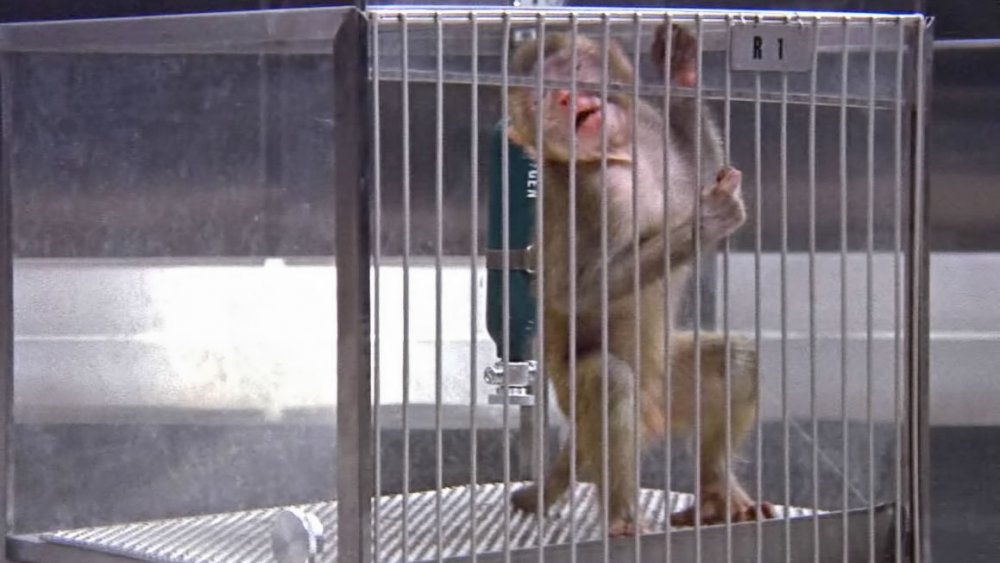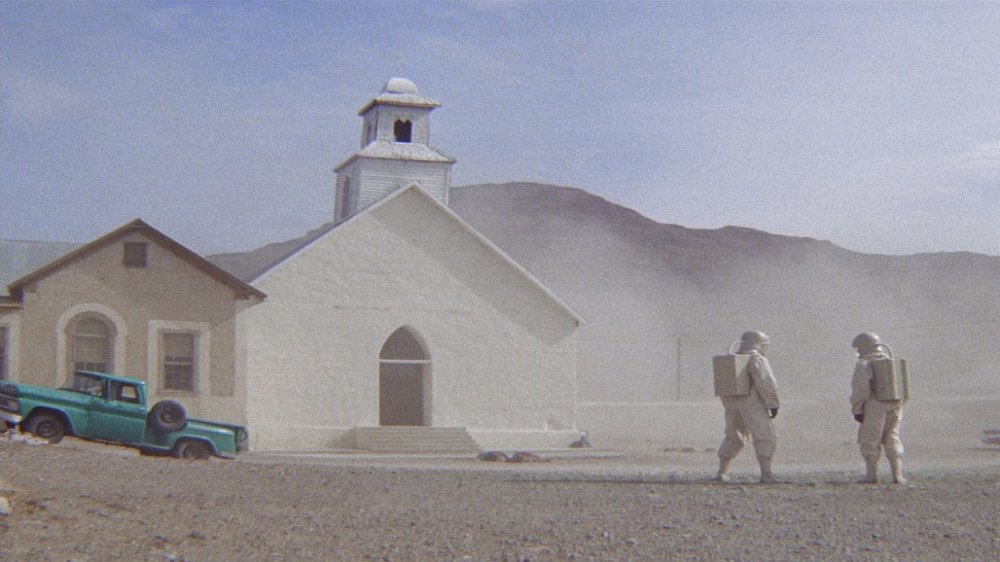The Untold Truth Of The Andromeda Strain
1971's The Andromeda Strain begins in the rural town of Piedmont, New Mexico. Devastated by illness following the crash of a mysterious satellite, only two of its inhabitants are left standing: an old man and a six-month-old infant. A team of top scientists is assembled in a secret military laboratory to learn what, exactly, slaughtered the people of Piedmont ... only to discover that it is an alien organism of uncommon virulence. As they struggle to contain the organism's rapid spread, they confront widespread panic, scientific gridlock, and the mystery that is the human body.
The Andromeda Strain remains a classic for many reasons. As a story of humanity testing its physical limits, it is enthralling. As a cautionary tale of hubris, technology, and destruction, it only grows more prescient with age. As a work of science fiction, it isn't just intriguing — it's just downright cool. We're here to further your appreciation of this searing film: This is the untold truth of The Andromeda Strain.
It's based on a novel by Michael Crichton
Author Michael Crichton's work has been adapted into a wide variety of stone-cold sci-fi smash hits, from Jurassic Park to Westworld. While Crichton produced many novels under a pseudonym that achieved decidedly muted recognition, it was 1969's The Andromeda Strain that propelled the author to international acclaim. The Andromeda Strain scored him a slot on the New York Times Best Seller list, sparked widespread discussion, and garnered him rave reviews. This began his decades-long career as one of the most popular writers in the world, selling over 200 million copies of his 25 books.
Crichton's work tends to be highly prescient in its foresight of human failure in the face of scientific challenges. The Andromeda Strain is no different — as in Jurassic Park and Westworld, it can be compared to no end of real-world bumbling. Antibiotic-resistant super-bugs? Those are real. Government incompetence in the face of a pandemic? Ditto. Crichton wasn't just clever — he was almost clairvoyant.
It was helmed by renowned director Robert Wise
When Universal Pictures purchased the rights to The Andromeda Strain, the studio went all in with a budget of $6.5 million. Much of this budget went to the special effects, but a hefty portion went towards hiring big-name director Robert Wise.
Wise cut his directorial teeth on small horror and thriller flicks throughout the 1940s, including The Curse of the Cat People and A Game of Death. 1951's The Day the Earth Stood Still was his first major hit, quickly followed by successes including The House on Telegraph Hill and I Want to Live!. But it wasn't all murderous aliens and noir grimacing for Wise — he's likely best known as the director of West Side Story and The Sound of Music.
The Andromeda Strain would prove to be Wise's last true success — later productions like Star Trek: The Motion Picture fell fairly flat. In that sense, Wise's career came full circle. Though his filmography ranges far and wide, it was high-concept science fiction that launched his earliest triumphs and it is high-concept science fiction that fuels his last great film.
The screenwriter was fooled by fake citations
The Andromeda Strain's scientific leaps are backed up by a slew of citations Crichton includes at the back of the book. This gives the whole tale an eerie sense of authenticity, making it seem like it all really could have happened. Moreover, it makes sense that Crichton would use hard science to back up his claims. He was, after all, a Harvard-trained doctor before he was a writer. One readily assumes he knows what he's talking about.
There's just one problem: The sources are all made up. Crichton never pretends otherwise — the references are just another part of the novel. But when screenwriter Nelson Gidding looked into the false bibliography Crichton concocted, he had yet to grasp this fact. Gidding explains on The Andromeda Strain's DVD commentary that, upon realizing his mistake, he followed Crichton's lead, creating technical jargon and scientific theories to support the film's plot as needed. In other words, don't believe everything you read or watch.
It features a surprisingly unknown cast
The Andromeda Strain's $6.5 million was large for 1971, indicating the fact that the studio expected big things from the film. Somewhat surprising, then, is the fact that its cast is largely made up of unknown actors.
The film's two primary leads, Arthur Hill and James Olsen, had only appeared in a handful of films before The Andromeda Strain. Though Hill garnered serious respect upon the stage, neither ended up with anything in the way of major stardom. Secondary leads David Wayne and Kate Reid brought even less experience to the film, and ended up with similarly small profiles in the years after — though Reid does make a small appearance in David Lynch's Blue Velvet some 15 years later.
Interestingly enough, the biggest actor in the movie had one of the smallest parts: George Mitchell plays the old man who survives the virus. Though Mitchell was rarely the star, his career includes parts in famous films like 3:10 to Yuma, Birdman of Alcatraz, and The Unsinkable Molly Brown, in addition to Broadway roles in everything from The Crucible to The Merry Widow.
A major character swapped gender
Kate Reid's Dr. Ruth Leavitt is an integral part of The Andromeda Strain. Funnily enough, however, had the film been somewhat more faithful to the book, she wouldn't have been in it at all.
That's right: In the book, Dr. Ruth Leavitt is actually Dr. Peter Leavitt. It was screenwriter Nelson Gidding who lobbied to change the character from male to female in order to lend the cast more diversity. Director Robert Wise was initially against the change — he was uninterested in plopping an eye-candy character in the middle of his serious science fiction. But Gidding convinced him with his visions of a serious female scientist who drove the plot with real agency. After conferring with a number of scientists who were enthusiastic about the idea, Wise changed his mind and Dr. Ruth was born. Wise ended up being happy with the change, pronouncing Ruth the most interesting character in the movie.
Crichton toured the set -- and made a major connection
Way back in 1971, Michael Crichton was an untested source source of cinematic success. That would change, however — in no small part because of The Andromeda Strain. While he toured Universal Studios during the film's production, he was escorted by another then-nobody who would go on to do big things: Steven Spielberg.
In a 2017 interview, Spielberg explained that he had just been given a seven-year television contract with Universal when he was tasked with showing Crichton around. 20 years later, Spielberg bought the rights to Crichton's smash-hit novel Jurassic Park, the result being one the highest grossing films of that year, and, eventually, one of the highest grossing films of all time.
Spielberg and Crichton later collaborated on the creation of the TV series ER, which was based on the author's personal experiences as a young physician. The show became a huge success, garnering over 100 Emmy Awards. It also introduced the world to a then-struggling actor you might recognize today: George Clooney.
Its visual effects are entirely practical
While later movies based on Michael Crichton's books would make extensive use of CGI, no such technology existed in 1971. The Andromeda Strain was made the old-fashioned way: Out of real materials and no small amount of creative ingenuity.
The Andromeda Strain's special effects were masterminded by Douglas Trumbull, the visual wizard behind films like 2001: A Space Odyssey, Close Encounters of the Third Kind, Blade Runner, and Tree of Life. By today's standards, many of the effects in The Andromeda Strain look almost laughably outdated — but consider how they looked in the context of 1971. Those blocky, pixelated computer screen readouts were pretty fantastic.
If one effect stood out in 1971, it was the "computerized" 3D diagram of the underground, multilevel laboratory. At the time, the technology didn't exist to create such a visual. So how did the filmmakers achieve it? An image of each level of the lab was projected onto a piece of cardboard, which was then moved slowly while the camera was rolled to create a transparent exposure. Once each level had been filmed, they layered the shots over one another to produce the final 3D model.
"Killing" a monkey
One scene in The Andromeda Strain that leaves many viewers shuddering involves the death of a lab monkey. In the scene in question, the poor little primate is exposed to the contagion, causing it to writhe and convulse until it is no more. It's a sorrowful scene for a lot of reasons, chief among them being the monkey's very convincing death throes. Yet that very monkey was not, in fact, killed while making this scene.
In order to film the sequence, the filmmakers were faced with a conundrum: How do you realistically make it look like you're killing a monkey without actually killing it? To solve the problem, an airtight set was created into which carbon monoxide was pumped, which essentially forced the monkey to suffocate. Then right as the little creature was on the verge of passing out, a waiting veterinarian rushed onset and treated it with oxygen.
While the whole process was supervised by representatives of ASPCA, it's hard to imagine filmmakers doing anything like that these days. Thankfully, CGI now makes such scenes possible without any animal suffering.
You can still visit the ghost town where it was filmed
In both the book and movie versions of The Andromeda Strain, the name of the unfortunate town struck dead by the mysterious contagion is Piedmont, New Mexico. In reality, no such town exists, so the filmmakers took over the small town of Shafter, Texas, for filming purposes.
Back in 1971, the town had a puny population of just 20. Today it has even less, with a population dipping as low as 11 residents. Even with its almost nonexistent populace, however, the town does get its fair share of visitors coming to enjoy its reputation as a ghost town. While Shafter's main draw is its abandoned silver mines, film enthusiasts also flock to the locale. Those who have watched The Andromeda Strain will recognize its streets and many of the buildings, most notably the church. With the price of silver rising, mining has seen a small resurgence within the town. That could bode well for Shafter — so long as no mysterious satellites crash any time soon.
